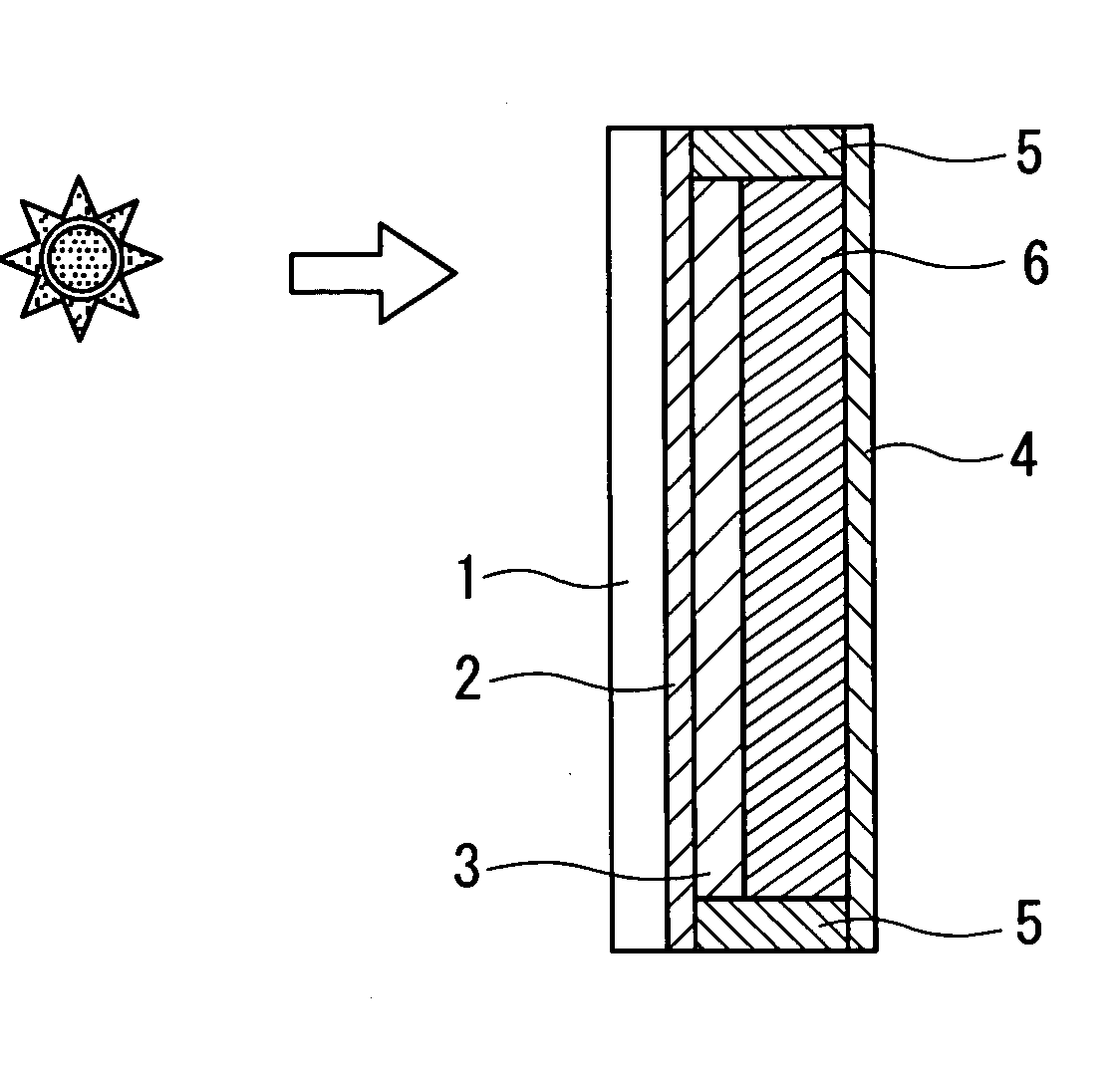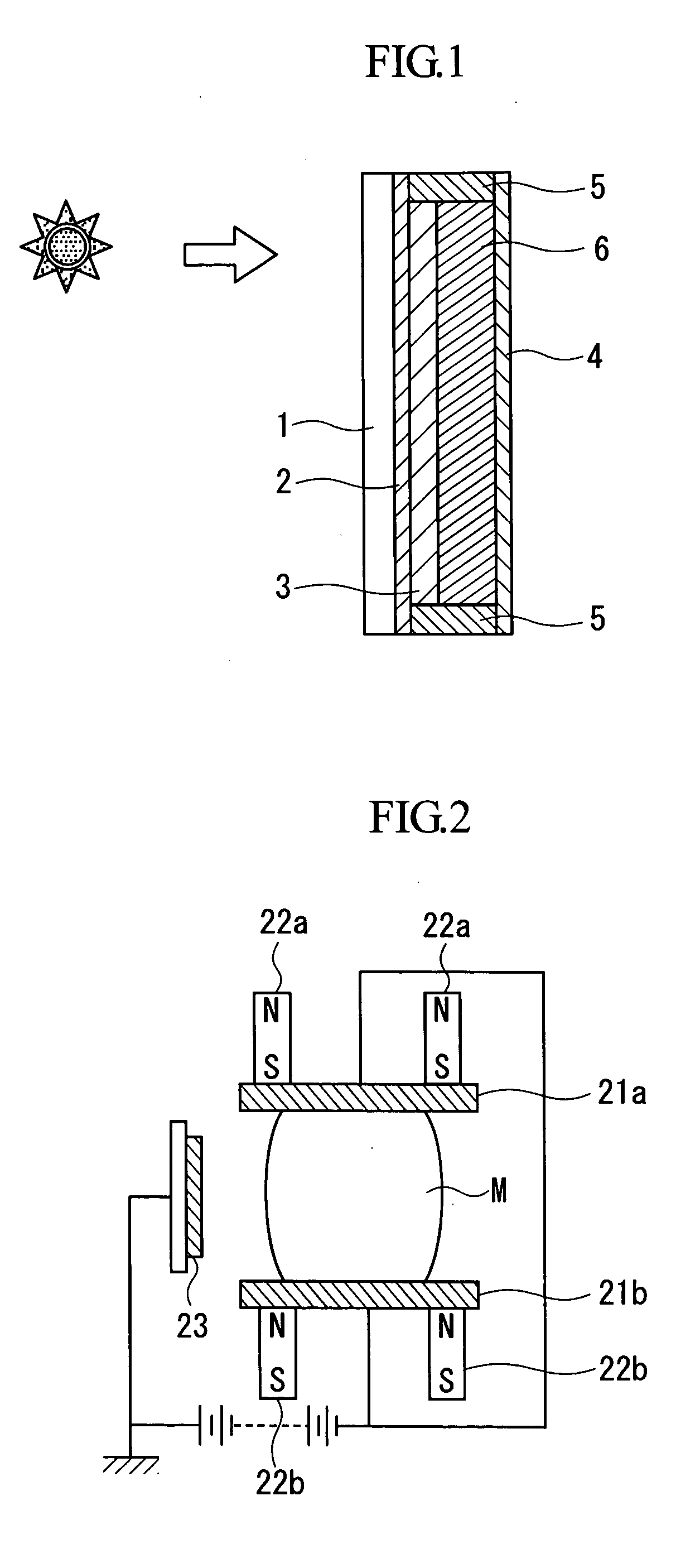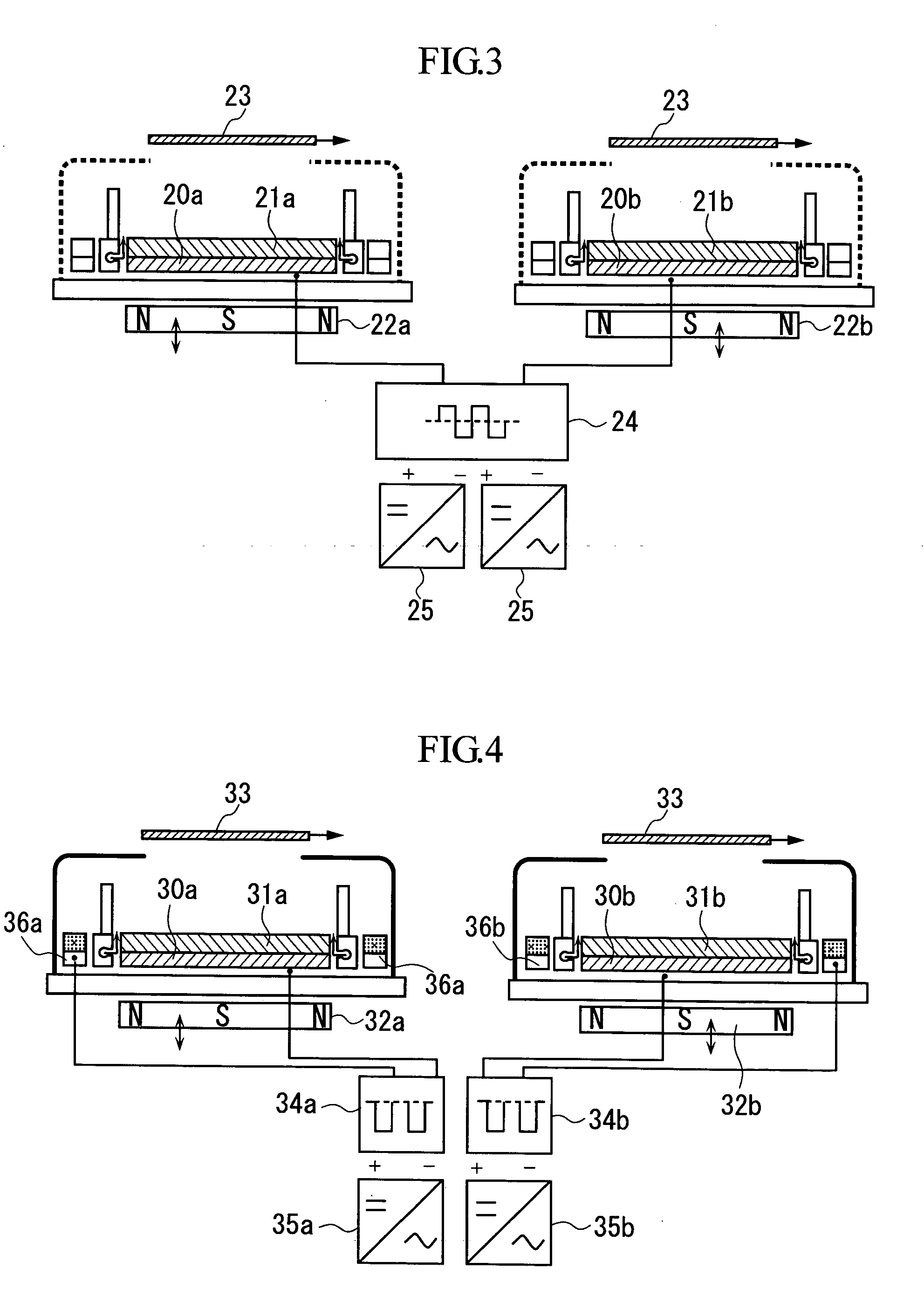Organic dye-sensitized metal oxide semiconductor electrode and its manufacturing method, and organic dye-sensitized solar cell
a metal oxide semiconductor and manufacturing method technology, applied in the direction of electrolytic capacitors, thermoelectric devices, electrochemical generators, etc., can solve the problems of small practical use of solar cells, high price of solar cells using silicon as photoelectric conversion materials, and low pri
- Summary
- Abstract
- Description
- Claims
- Application Information
AI Technical Summary
Problems solved by technology
Method used
Image
Examples
example 1
[0133] (1) Preparation of Transparent Electrode
[0134] The transparent electrode was prepared using a sputtering device as follows:
[0135] Sputtering was carried out on a glass plate (thickness: 2 mm) of a size of 5.times.5 cm using a ceramic target of ITO (Indium-tin oxide) having 100 mm.phi. with flowing Ar gas of 10 cc / min. and oxygen gas of 1.5 cc / min. for five minutes under the conditions of pressure within the device of 5 mTorr and supply electric power of 500 W. Thus the ITO layer having the thickness of 3,000 .ANG. was formed on the glass plate, which had surface resistivity of 10 .OMEGA. / .quadrature..
[0136] (2) Preparation of Semiconductor Layer of Metal Oxide
[0137] A titanium oxide thin layer was formed on the resultant glass plate provided with ITO transparent electrode using an electron beam heating type-vacuum deposition device as follows: A titanium oxide pellet having the purity of 99.99% was placed in a deposition source for an electron beam, and deposition was carried...
example 2
[0143] The procedure of Example 1 was repeated except for carrying out the preparation of semiconductor layer of metal oxide in the following manner to prepare a solar cell:
[0144] (2) Preparation of Semiconductor Layer of Metal Oxide
[0145] A titanium oxide thin layer was formed on the resultant glass plate provided with ITO transparent electrode using an electron beam heating type-vacuum deposition device as follows: A titanium oxide pellet having the purity of 99.99% was placed in a deposition source for an electron beam, and deposition was carried out under the condition of electric current of 250 mA to form a titanium oxide layer having the thickness of 3,000 .ANG.. The glass plate having the titanium oxide layer was further subjected to heat treatment at 500.degree. C. for 30 minutes.
[0146] The resultant solar cell was exposed to light having intensity of 100 W / cm.sup.2 by a solar simulator. As a result, Voc (voltage in open-circuit) was 0.61V, Joc (electric current density caus...
example 3
Opposed Target Type-dipole Sputtering
[0152] (1) Preparation of Transparent Electrode
[0153] The transparent electrode was prepared using a sputtering device as follows:
[0154] Sputtering was carried out on a glass plate (thickness: 2 mm) of a size of 5.times.5 cm using a ceramic target of ITO (Indium-tin oxide) having 100 mm.phi. with flowing Ar gas of 10 cc / min. and oxygen gas of 1.5 cc / min. for five minutes under the conditions of pressure within the device of 5 mTorr and electric power of 500 W. Thus the ITO layer having the thickness of 3,000 .ANG. was formed on the glass plate, which had surface resistivity of 10 .OMEGA. / .quadrature..
[0155] (2) Preparation of Semiconductor Layer of Metal Oxide
[0156] A titanium oxide thin layer was formed on the resultant glass plate provided with ITO transparent electrode using an opposed target type diode sputtering device shown in FIG. 2 as follows: Two sheets of metal titanium targets having diameter of 100 mm were placed above the glass plate...
PUM
| Property | Measurement | Unit |
|---|---|---|
| Fraction | aaaaa | aaaaa |
| Thickness | aaaaa | aaaaa |
| Surface roughness | aaaaa | aaaaa |
Abstract
Description
Claims
Application Information
 Login to View More
Login to View More - R&D
- Intellectual Property
- Life Sciences
- Materials
- Tech Scout
- Unparalleled Data Quality
- Higher Quality Content
- 60% Fewer Hallucinations
Browse by: Latest US Patents, China's latest patents, Technical Efficacy Thesaurus, Application Domain, Technology Topic, Popular Technical Reports.
© 2025 PatSnap. All rights reserved.Legal|Privacy policy|Modern Slavery Act Transparency Statement|Sitemap|About US| Contact US: help@patsnap.com



